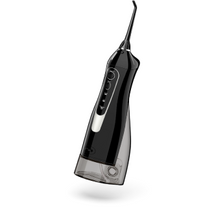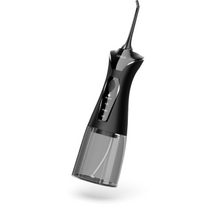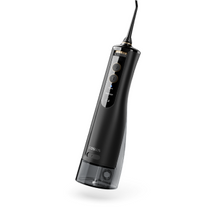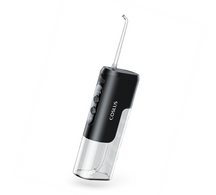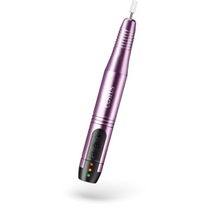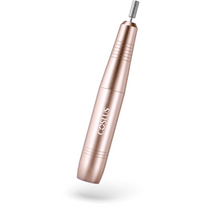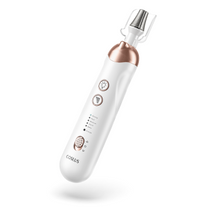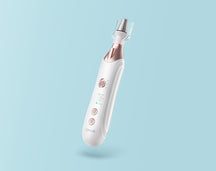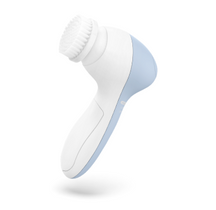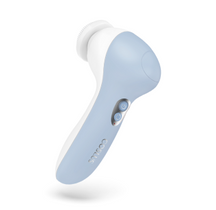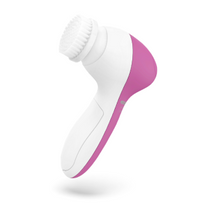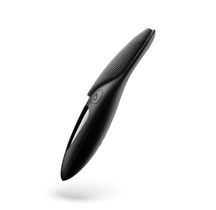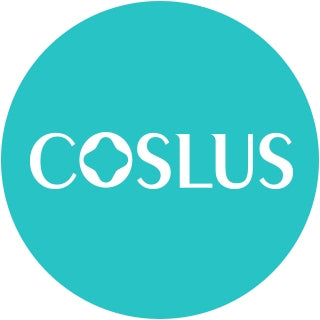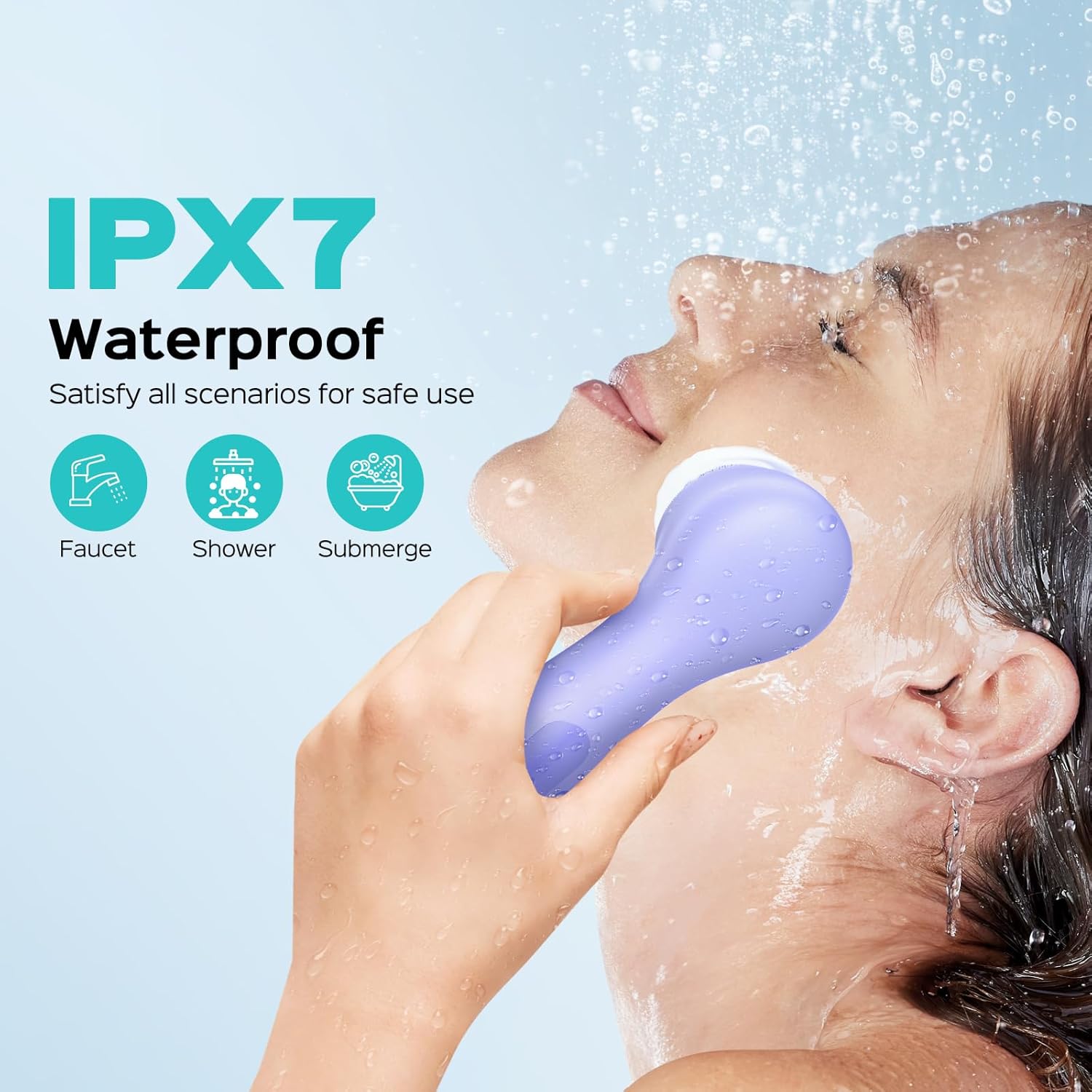
What Are the Disadvantages of an Electric Nail File?
Keeping your nails healthy while achieving a perfect manicure can be challenging, especially when considering electric nail files as an option. Many nail enthusiasts wonder if these powered tools are worth the investment or if they might cause more harm than good. Electric nail files offer speed and convenience, but they also come with potential problems like nail damage, safety issues, and discomfort from vibration.
What is an Electric Nail File?
If you've seen a nail tech shape and buff nails with ease in a fraction of the time it would take you at home with a regular file, you're seeing an electric nail file in action.
An electric nail file (also called an e-file or nail drill) is a handheld motorized tool that spins interchangeable bits at varying speeds to file, shape, buff, and polish nails. Rather than back-and-forth physical movement such as manual files, electric files achieve the work by vibrating or rotating, which provides faster, more precise results with little physical effort. Most models feature variable speeds (typically 3,000 to 30,000 RPM) and are sold in corded or rechargeable battery-powered versions.
At the salon, nail technicians use e-files for numerous purposes like shaping and shortening artificial nails, gel polish removal, pre-application smoothing of the nail surface, and fine cuticle detail work. Electric files are particularly handy in salon use for creating crisp smile lines for French manicures and for getting into tight areas around the cuticles. For home users, less powerful and less complicated versions of the files help with general nail preparation, extension maintenance, and light buffing.
Common Disadvantages of Electric Nail Files
While proper training helps minimize risks with electric nail files, even experienced users face inherent challenges with these powerful tools. The very features that make e-files efficient—high-speed rotation and powerful motors—also create specific drawbacks that anyone considering their use should carefully weigh.
1. They Can Damage Your Nails
Filing too fast with e-files can thin nails before you realize it. This weakens the nail plate and may cause damage that takes months to heal. Misused e-files create painful "rings of fire" (red, inflamed skin) or nail dents. The worst damage happens when you hit the nail matrix (growth area under the cuticle), which can permanently deform nails.
2. They Can Malfunction and Cause Injuries
Corded e-files pose electrical risks, especially in wet salon environments. Some models overheat during long use, creating fire hazards or breaking mid-service. Rechargeable models avoid some electrical issues but have battery problems like declining performance over time.
3. They Create Uncomfortable Heat
High-speed rotation tends to create friction and heat naturally. Excessive pressure or speed distributes this heat to the nail bed, resulting in anything from warm temperature to stinging burning. This heat can make nails brittle or even separate from the nail bed, especially on thin nails or when using dull bits.
4. They Vibrate and Hurt Your Hands
Vibration affects clients and nail technicians alike. Clients will experience discomfort or pain, especially those who have sensitive hands or arthritis. For technicians, repeated exposure results in hand tiredness during the treatment and leads to carpal tunnel syndrome or tendonitis over time.
5. Low-Quality Models Increase Risks
Professional e-files are totally different from economical consumer models. Economical models have poor speed control, which makes precision difficult to obtain and which also increases the risk of damage. Economical bits wear out faster, require more pressure, and generate more heat and vibration. Poor ergonomics of cheaper models implies hand fatigue and trouble with fine work.
Misconceptions About Electric Nail Files
1. "Electric Files Always Damage Nails"
One of the oldest myths is that e-files necessarily damage natural nails. Damage does happen, but not as a mechanism designed into the tool. Properly used professional e-files are actually gentler on nails than abrasive manual filing techniques. The precision of e-files allows trained technicians to work only on the exact areas that need attention and not waste time filing over the entire nail surface unnecessarily. Most nail technicians have successfully utilized electric files for several years without client damage, illustrating that the equipment itself is not necessarily damaging.
2. "The Tool Is Dangerous, Not The User"
Nail damage, when it does occur with electric file use, is generally due to a technique misuse and not due to the tool being defective. Some of the typical mistakes made by users include:
- Exerting too much pressure (the bit should do the work, not force)
- Selecting inappropriate speed settings (higher isn't always better)
- Using the wrong bit for the task at hand
- Holding the file in one spot for too long
- Filing in the wrong direction against the nail grain
These are mistakes that can be made with any tool, but the power of electric files just amplifies the damage. Just like a power saw is more demanding than a hand saw, electric files require proper respect and technique skills.
3. "Anyone Can Learn To Use Them Quickly"
The second misconception is that electric nail files are intuitive tools anyone can master by watching some YouTube videos. The reality is that an effective e-file technique requires formal training and lots of practice. Professional nail technicians may take months or weeks to develop their skills before they are fully confident. Learning involves understanding:
- How different bits function and when to use each type
- Proper hand positioning and tool angles
- How to maintain control at various speeds
- Recognizing when to stop filing based on visual and tactile feedback
The majority of nail technicians recommend that beginners start by practicing on artificial tips or themselves first, then practice on clients, slowly building speed and confidence over time.
4. "More Expensive Means Safer"
While quality matters with electric files, price alone doesn't guarantee safety. Some mid-range models offer excellent control features and reliability, while certain expensive models may still cause damage in untrained hands. More important than price is selecting a file with appropriate features for your skill level, including adequate speed control, minimal vibration, and ergonomic design. Even the most basic model can be safe when used with proper technique and respect for the tool's capabilities.
Factors That Exacerbate Disadvantages
You've probably heard both sides of the electric nail file debate—some say they're perfectly safe while others warn they'll ruin your nails. The reality? These tools aren't automatically good or bad. Here's what actually makes these tools risky so you know what to watch out for:
- Poor Training Causes Most Damage: Without proper training, users apply too much pressure, hold the file at the wrong angles, and use inappropriate speeds. Professional nail techs need specialized e-file courses, not just general nail education. Home users should learn proper techniques before attempting to use them.
- Cheap Tools Are More Dangerous: Low-quality electric files often lack precise speed controls and have inconsistent motors that cause unexpected speed changes. They typically vibrate more, reducing control and increasing hand fatigue. Choose models from established manufacturers with safety certifications, even if they cost more.
- Using Wrong Bits Harms Nails: Using incorrect bits for specific tasks increases damage risk. Coarse-grit bits can quickly thin natural nails. Metal bits generate excessive heat. Worn bits require more pressure, causing more heat and potential damage. Each bit type—carbide, diamond, ceramic—has a specific purpose that users must understand.
How to Use Electric Nail Files Safely to Minimize Risks
Don't worry—electric nail files aren't as scary as they might sound. You can use them safely and get great results if you know what you're doing. The very things that can cause problems—the speed, power, and special bits—are actually what make these tools so effective when used correctly.
1. Learn How to Use Your E-File First: Don't just wing it with your e-file! Take time to learn proper techniques through online courses, YouTube tutorials from licensed professionals, or in-person workshops. Even a single lesson will significantly enhance your skills and safety. Begin with the fundamentals of how to hold the handpiece and know various bit types before trying advanced techniques.
2. Buy Good Quality Tools for Safety: A good electric nail file need not be expensive, but steer clear of the lowest priced ones. Find ones with smooth speed transitions (not merely high/low) and ergonomic grip designs that minimize hand fatigue. The best e-files have little vibration and even power output, making them simpler to control.
3. Press Lightly and Keep Moving: Let the tool do the work instead of pressing hard—light, gentle movements prevent heat buildup and nail damage. Keep the file moving constantly rather than lingering in one spot, and take breaks to check your progress. When in doubt, slow down! Lower speeds give you more control and reduce risks.
4. Clean Your Tools After Each Use: Keep your bits clean after every use by swabbing off dust and debris—this easy habit stops excessive friction and heat. Change bits when they get dull or worn out, typically every few months with frequent use. Clean your handpiece once a week and inspect the cord (if it is corded) for damage
FAQs About Electric Nail Files
Q1: Are electric nail files safe for beginners?
Electric files can be safe for beginners if they start off with training. Choose a beginner-friendly model with lower speeds (less than 15,000 RPM) and practice on artificial tips first, not your real nails. Start with the lowest speed and use light pressure. Take a class or watch step-by-step tutorials from professional nail technicians before first use.
Q2: How do I avoid overheating while using an e-file?
To prevent overheating, don't leave the bit in one position for more than a few seconds. Apply light pressure—let the bit do the work instead of applying pressure to it. Rest every 15-20 seconds to let the nail cool. If the nail feels warm to the touch, stop using it immediately. Lower your speed setting and make sure that you are using the appropriate bit for the task at hand. Clean bits from time to time, as accumulated debris causes friction and heat.
Q3: What should I look for when buying an electric nail file?
Look for variable speed controls to 3,000 RPM for precision applications. Choose a low-vibration model to prevent hand fatigue. If for professional work, choose one with a powerful motor (at least max 30,000 RPM) that can handle all-day use. Choose one that accepts standard-sized bits for more flexibility. Look at weight and ergonomics—the file must be easy to hold.
Q4: How often should I replace the bits?
Change bits when they become worn or when there is visible wear. In professional use, carbide bits will last 3-6 months with a good cleaning, and diamond and ceramic will last 6-12 months depending on usage. Bits have a longer life in homeowner use. Using dull bits puts more pressure and excessive heat buildup on the nails, damaging them.
Q5: Can electric files be used on natural nails?
Yes, but with caution. Use fine grit bits (180 grit or higher) at low speeds (less than 10,000 RPM) on natural nails. The e-file should touch the nail surface lightly—use it to smooth and buff only, never cut length or thickness. Manual files are used most often by professionals on natural nails to prevent breaking them.
Use Electric Nail Files Right and Get Amazing Results
Don't let the risks scare you away! With the right approach, electric nail files transform your manicure routine from tedious to professional in minutes. The key? Proper training, quality equipment, and smart technique. Choose the perfect speed settings, use the correct bits for each task, and maintain a gentle touch. You'll slash your manicure time in half while achieving precision that manual files simply can't match. Whether you're a DIY enthusiast or a budding professional, these powerful tools deliver flawless results when used correctly. Take control of your nail game today and experience the difference proper e-file skills make!
Table of Contents
Table of Contents


